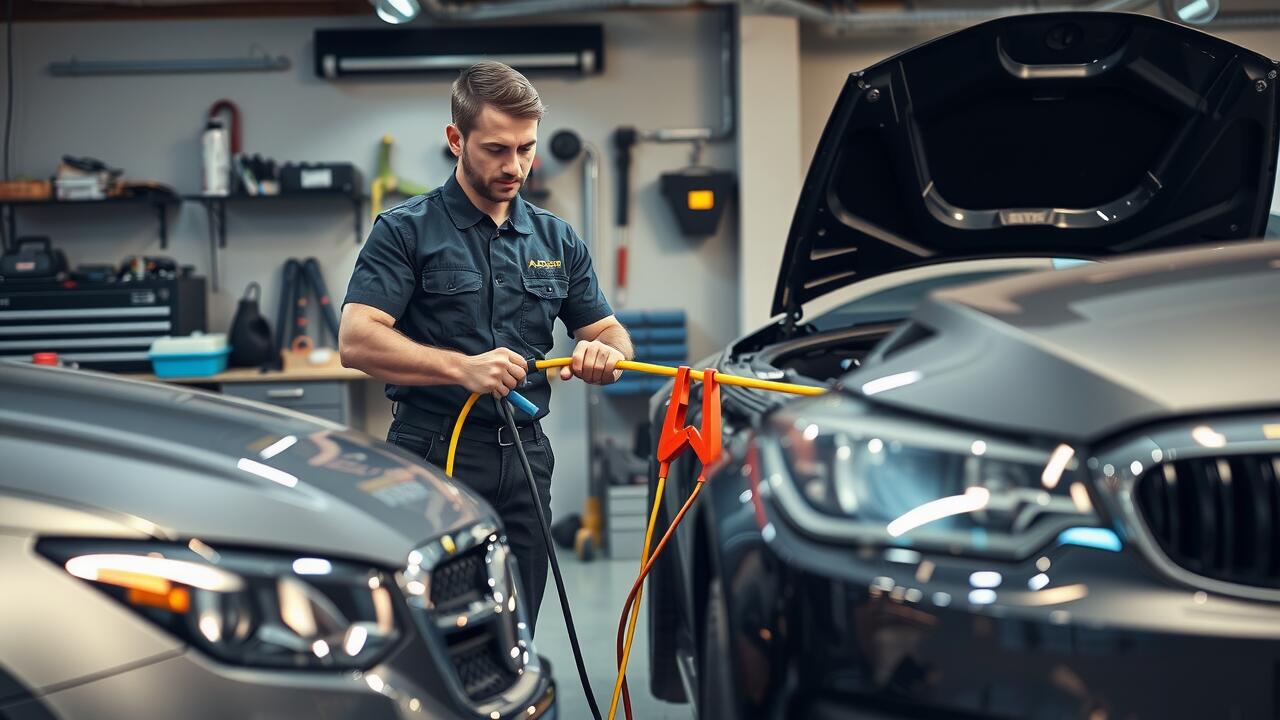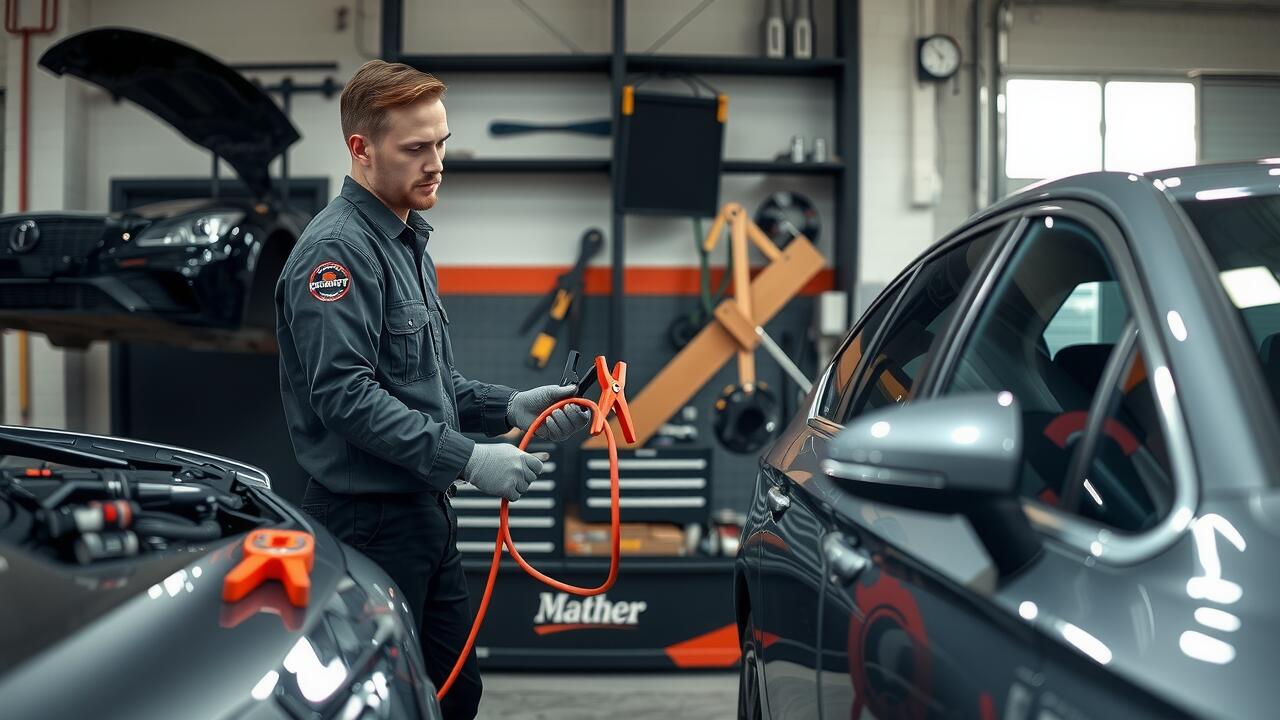
DIY Jump Start Alternatives
For those comfortable with basic automotive tasks, considering DIY jump starts can be a practical option. With the right knowledge and equipment, you can save time and money. Having a reliable set of jumper cables and another vehicle on hand can often suffice. Make sure to evaluate the battery's condition beforehand, as this can determine if a jump start will be effective or if further assistance is needed.
Another alternative includes portable jump starters that are gaining popularity. These compact devices provide a convenient solution without relying on another vehicle. Simply connect the jumper cables to your battery, follow the instructions, and start your engine. They are especially useful for individuals who often find themselves in situations where traditional jump starts are impractical.
When to Consider Doing It Yourself
When considering a DIY approach to jump starts, it's essential to evaluate your comfort level and familiarity with vehicle systems. If you have prior experience and access to the necessary tools, performing a jump start on your own can save both time and money. Being prepared with the right equipment, such as jumper cables and a working vehicle, creates a more straightforward process. Remember, however, this option can carry risks if precautions are not taken.
It's also important to assess the condition of the dead battery and the surrounding environment. If the battery appears swollen or leaks fluid, attempting a jump start could lead to hazards. Similarly, jumping a car in inclement weather or tight spaces can complicate the process. Weighing these factors carefully can help you decide if tackling a jump start yourself is a viable choice.
Safety Precautions for Jump Starting
When conducting jump starts, safety precautions are paramount to prevent accidents and ensure a successful process. Always use jumper cables that are in good condition. Inspect for frays or corrosion since damaged cables can pose a risk. Make sure both vehicles are turned off before connecting the cables. This minimizes the chance of electrical surges that could harm the vehicle's systems.
Properly positioning the vehicles plays a crucial role in safety. Park them close enough for the jumper cables to reach but ensure they do not touch each other. This separation helps prevent any electrical shorts. After connecting the cables, double-check all connections for accuracy. Following these safety measures can make jump starts smoother and reduce potential hazards associated with the process.
Ensuring a Safe Process
Adhering to safety protocols is crucial when performing jump starts. Before connecting the jumper cables, ensure that both vehicles are off. Check that the jumper cables are free of any damage and that the clamps are in good condition. It is also important to position the vehicles correctly, allowing enough space between them without any risk of them touching each other during the process. This minimizes the chances of any electrical malfunction that could lead to accidents.
When making connections, always follow the correct order to prevent battery damage and ensure the safety of all involved. Start by attaching the positive cable to the positive terminal of the dead battery, followed by the positive terminal of the good battery. The negative cable should then be connected to the good battery's negative terminal before attaching the other end to a metal ground on the vehicle with the dead battery. This method helps to reduce the risk of sparks, providing a safer environment for performing jump starts.
Benefits of Professional Services
When facing a dead battery, relying on professional services for jump starts can provide peace of mind. Trained technicians possess the knowledge and experience to diagnose underlying issues that may lead to a battery failure. They arrive with the right tools and equipment, ensuring that the jump start process is completed efficiently and safely. This expertise reduces the risk of damaging the vehicle's electrical system, giving car owners confidence in the reliability of the service.
Professional jump starts often come with additional services, such as battery testing and inspection. This thorough approach not only addresses the immediate problem but also helps prevent future breakdowns. Technicians can identify signs of battery wear or alternator issues that may require attention. By choosing professional support, car owners can ensure that they are making an informed decision about their vehicle's health.
Expertise and Equipment Advantages
Professional services for jump starts offer significant advantages through well-trained technicians and specialized equipment. Experts have experience diagnosing a range of issues that can lead to battery failure. They can quickly determine whether a battery replacement is necessary or if a simple jump start will suffice. This level of expertise minimizes the risk of damaging the vehicle's electrical system.
Additionally, professional services come equipped with high-quality tools and jump packs designed for safe and efficient use. These tools often surpass the performance of typical DIY alternatives, providing a more reliable jump start. Using the right equipment reduces the likelihood of accidents and ensures that the process is conducted under optimal conditions.
FAQS
How much does a call out for a jump start typically cost?
The cost for a call out to jump start a vehicle usually ranges from $50 to $150, depending on the service provider and your location.
Are there additional fees involved with a jump start service?
Yes, some service providers may charge extra fees for things like mileage, after-hours service, or specialized equipment, so it’s best to confirm all costs upfront.
Can I expect a jump start to be covered by my insurance?
It depends on your insurance policy. Some roadside assistance plans include jump starts, while others may not. Check with your insurance provider for details.
How long does it take for a professional to arrive for a jump start?
Typically, a professional can arrive within 30 to 60 minutes, but wait times may vary depending on your location and the time of day.
Is it worth calling a professional for a jump start instead of doing it myself?
If you're unsure about the process or lack the necessary equipment, calling a professional can provide peace of mind and ensure safety.
